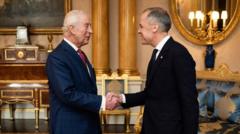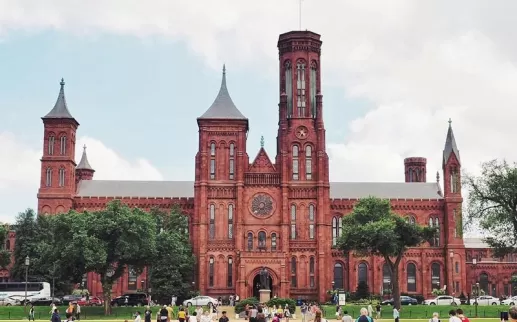In a remarkable diplomatic gesture, Prime Minister Mark Carney has officially invited King Charles III to Canada, marking the monarch's first visit to the country as reigning head of state and underscoring a clear signal of Canadian sovereignty. This invitation follows a long history of regional tensions regarding Canada's ties to the British crown and positions Carney in opposition to the ideas promoted by former US President Donald Trump.
The backdrop for this development is a significant shift in Canada's relationship with the monarchy over the last decade. A decade ago, former Prime Minister Stephen Harper faced criticism for bolstering British royal symbolism within Canadian politics—an attempt that included replacing Canadian artwork with that of the monarchy. In contrast, Liberal Prime Minister Justin Trudeau sought to diminish those ties by reinstating works by Quebec artists.
Fast forward to 2025, and under Carney's leadership, the symbolism of inviting the King to open the 45th Canadian Parliament signifies a renewed embrace of royal connections, strategically reaffirming Canada’s distinct identity amidst American cultural and political domination. As Canadian historian Justin Vovk highlights, this display is “a theatrical statement about Canada’s uniqueness,” contrasting US President Trump’s repeated suggestion that Canada functions as the "51st state."
While Canada gradually embraced its independence from British rule, with milestones such as the patriation of the constitution under Prime Minister Pierre Trudeau in 1982, the monarchy has remained an integral part of the parliamentary framework. Carney's invitation marks a departure from previous Liberal sentiments and reinstates the monarchy as a cornerstone of Canadian pride.
The upcoming visit carries additional weight as Carney has been vocally critical of Trump, who exacerbated tensions through economic tariffs that threatened Canada's stability as a significant trade partner. In Carney’s words, the King's arrival represents “a historic honour that matches the weight of our times,” emphasizing the importance of Canadian self-identity.
Despite the monarchy's historical interactions with Ottawa, with no British sovereign having opened parliament since 1977, the event is poised to illustrate a connection between Canada and Europe, a direction Carney has publicly advocated. This symbolically strengthens Canada’s position on the world stage as it navigates its complex relationship with the United States.
However, opinions on the monarchy within Canada are mixed. Some Canadians view its significance with skepticism, particularly in light of the ongoing dialogue surrounding reconciliation with Indigenous communities and calls from Quebec politicians to sever ties with the crown. The separatist Bloc Québécois expresses intent to re-examine allegiance oaths to the monarchy.
As the King and Queen prepare for this short, pivotal journey—cancelled previously due to health concerns—the palace aims for the trip to resonate profoundly with the Canadian public, marking a transitional moment not just in royal visits, but in the ongoing narrative of Canada’s national identity.




















